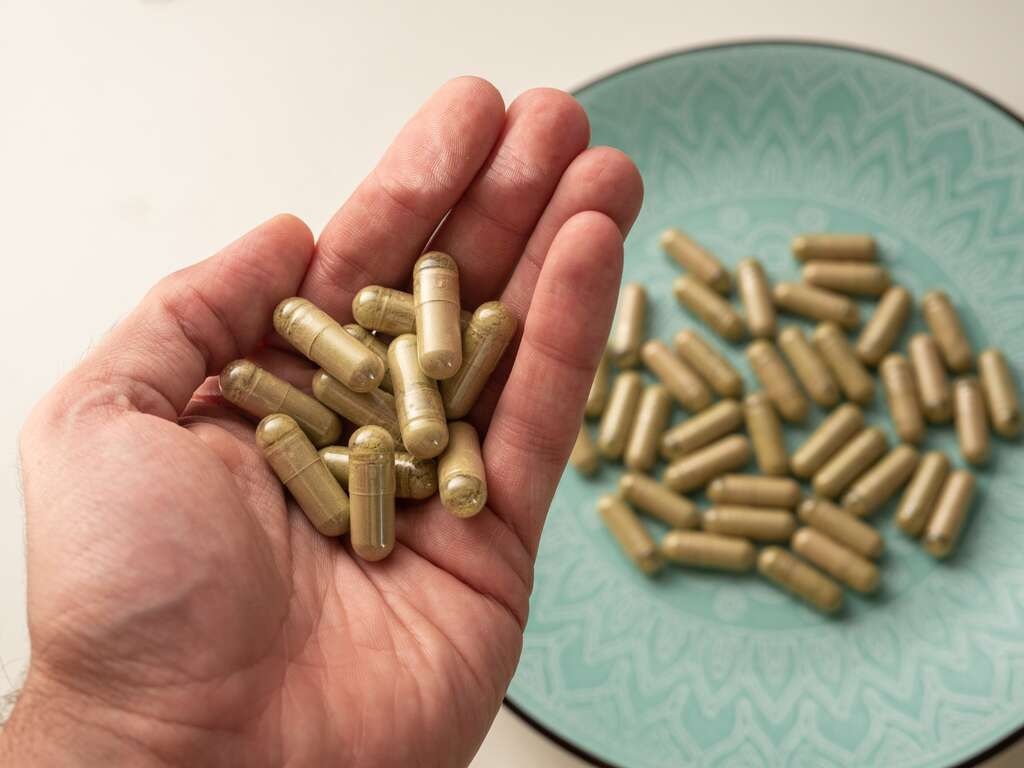Kratom grows in Southeast Asia and is a tropical evergreen tree. Its leaves contain various compounds including alkaloids like mitragynine and 7-hydroxy mitragynine. At low doses, kratom acts as a stimulant, while at higher doses it has opioid-like effects in the brain.
Benefits
Kratom offers several potential benefits pain relief, relief from opioid withdrawal symptoms, reduced anxiety/stress, and increased energy and focus. However, there are also risks like the development of dependence/addiction, side effects like nausea, constipation, itching, and sweating, and potential contamination of supplements with heavy metals or other substances. The effects also vary dramatically between doses with higher doses causing sedative effects instead of stimulating effects. These factors, among others, make kratom a controversial herb that requires careful use and monitoring.
Legality and access
The legality of kratom is confusing and rapidly changing worldwide. As of now, it is legal at the federal level in the United States but banned in 6 states and several cities/counties. There have been efforts to ban kratom nationwide which have not succeeded so far. There is also talk of regulating it as a dietary supplement. Since the legality is unclear, most mainstream health stores do not sell kratom products, so people have turned to online vendors, head shops, gas stations, or boutique stores to buy them. However, regulation of such vendors is also sparse, so there is an extra risk of faulty labeling, contamination, or incorrect dosing in the products.
Dosing challenges
Since the best kratom capsules is primarily sold as a botanical supplement and the active alkaloids vary dramatically between sources or batches, consistently dosing kratom is extremely difficult. Dosing guides provided by vendors should not be relied upon for accuracy. Taking too high a dose results in extremely unpleasant side effects, while too low a dose may not provide the desired benefits. That said, a good rule of thumb is to “start low and go slow” – beginning with no more than 1-2 grams to assess tolerance and slowly increasing dosage over time only if needed and you can tolerate the effects. Dosing is also dependent on whether plain leaf, enhanced leaf, or concentrated extract is used, with extracts being far more potent by weight.
Side effects and safety
Kratom may also interact with other substances – both prescribed medications and recreational drugs – so it should not be combined with other psychoactive substances. Discontinuation effects or withdrawal symptoms also occur if regular high-dose users stop abruptly. There is also a risk of contamination or adulteration of commercial kratom products by potentially toxic substances that cause serious illnesses. Salmonella outbreaks due to contaminated supplements have already occurred in recent years. Heavy metals like lead, nickel, and mercury have been detected in various kratom products. Other synthetic or pharmaceutical substances like fentanyl analogs have also appeared in kratom supplements, likely added deliberately by unscrupulous vendors to enhance their effectiveness. To avoid such risks, only purchase kratom from reputable sellers who provide lab testing certificates to prove the identity and purity of their products.

